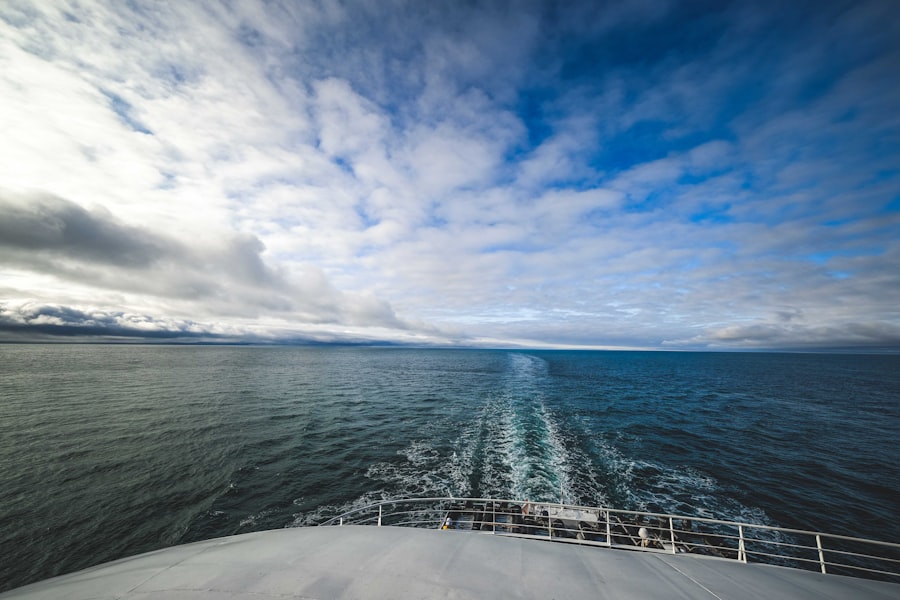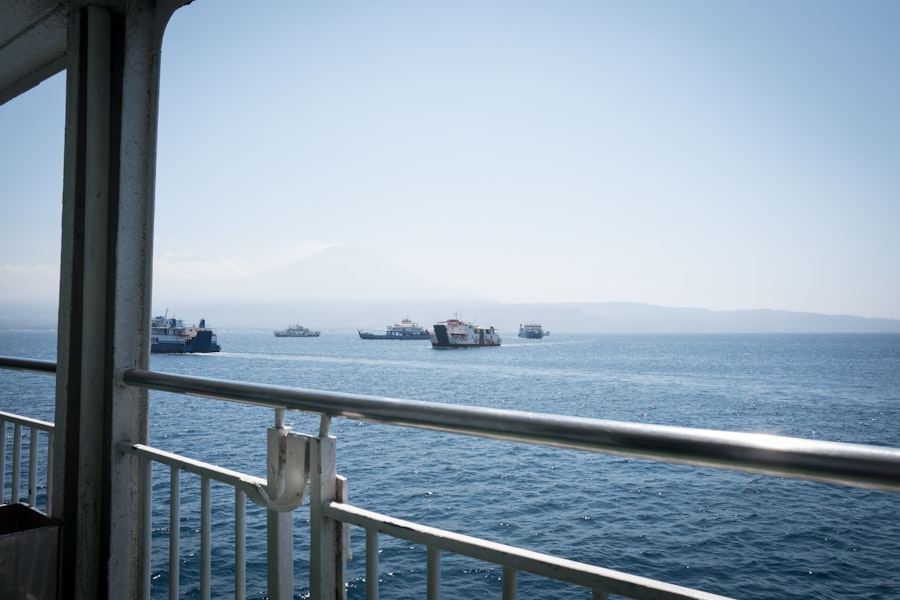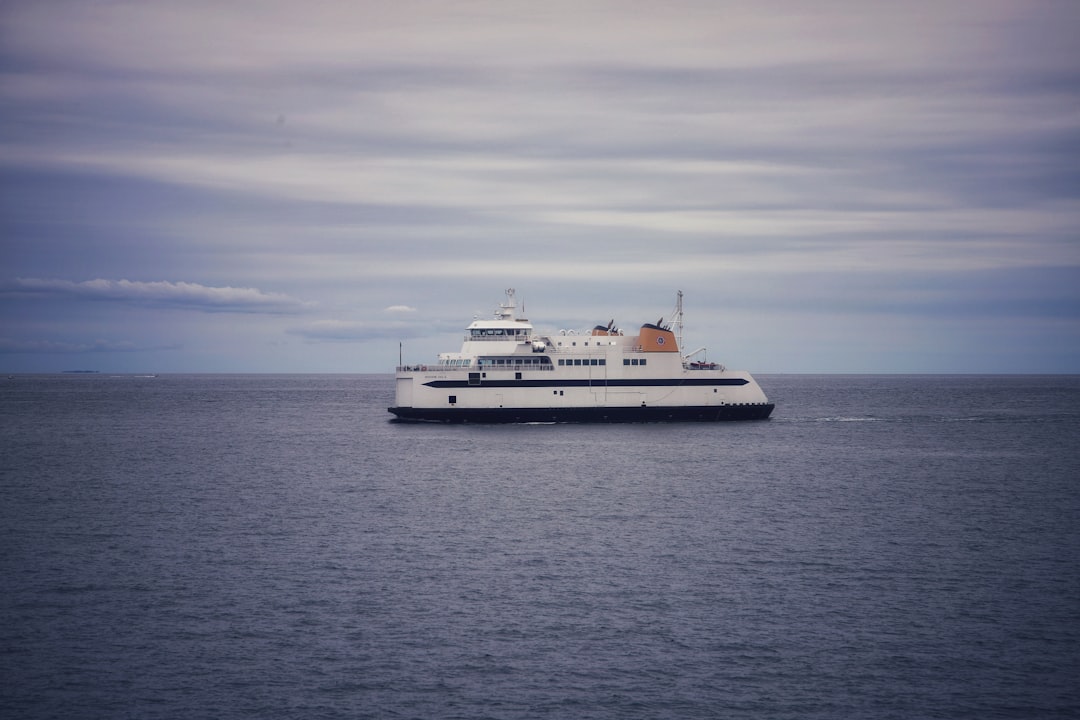The Drake Passage, a body of water that separates South America from Antarctica, is renowned for its tumultuous seas and breathtaking vistas. Named after the English explorer Sir Francis Drake, who navigated these waters in the late 16th century, the passage has become a rite of passage for adventurers and nature enthusiasts alike. Stretching approximately 600 kilometers (370 miles) between Cape Horn and the Antarctic Peninsula, it is often regarded as one of the most challenging maritime routes in the world.
The Drake Passage is not just a geographical feature; it is a gateway to the pristine wilderness of Antarctica, offering travelers a unique opportunity to witness some of the planet’s most awe-inspiring landscapes and wildlife. Crossing the Drake Passage is an experience that evokes a sense of adventure and anticipation. For many, it represents the culmination of a long-held dream to explore the icy realms of the southernmost continent.
The journey through these waters is often characterized by unpredictable weather and rough seas, which can be both exhilarating and daunting. However, for those who dare to embark on this voyage, the rewards are plentiful. From the stunning icebergs and glaciers to the diverse marine life that inhabits these waters, the Drake Passage serves as a prelude to the wonders that await in Antarctica.
Key Takeaways
- The Drake Passage is a challenging and exhilarating sea route that connects the Atlantic and Pacific Oceans, known for its unpredictable weather and rich wildlife.
- When preparing for a journey through the Drake Passage, pack warm and waterproof clothing, expect rough seas and prepare for seasickness, and be ready for unique wildlife sightings.
- The weather and conditions in the Drake Passage can be extreme, with strong winds, rough seas, and rapidly changing weather patterns, making it essential to be prepared and stay informed.
- Safety precautions for navigating the Drake Passage include securing all loose items, staying inside during rough weather, and following the instructions of the ship’s crew, while tips include staying hydrated and getting plenty of rest.
- Wildlife sightings in the Drake Passage can include whales, dolphins, seabirds, and even penguins, offering a unique opportunity for wildlife enthusiasts and photographers.
Preparing for the Journey: What to Pack and Expect
Preparation is key when embarking on a journey across the Drake Passage. Travelers should begin by carefully considering what to pack for this unique adventure. Layering is essential, as temperatures can fluctuate dramatically throughout the day.
A good base layer, insulating mid-layers, and a waterproof outer layer will help ensure comfort in varying conditions. Additionally, sturdy waterproof boots are crucial for navigating wet decks and icy terrain. Accessories such as gloves, hats, and scarves should not be overlooked, as they provide extra warmth against biting winds.
Beyond clothing, travelers should also consider packing essentials such as seasickness medication, binoculars for wildlife watching, and a high-quality camera to capture the stunning scenery. It is advisable to bring along personal items like sunscreen and lip balm, as even in cold climates, UV rays can be intense. Furthermore, travelers should familiarize themselves with the cruise itinerary and any specific requirements set by their chosen expedition company.
Understanding what to expect during the journey can help alleviate anxiety and enhance the overall experience.
Understanding the Unique Weather and Conditions of the Drake Passage

The weather in the Drake Passage is notoriously unpredictable, characterized by rapidly changing conditions that can shift from calm to stormy in a matter of hours. This region is influenced by powerful ocean currents and winds that can create challenging waves, making it essential for travelers to be prepared for anything. The passage is often described as having two distinct sections: the relatively calm waters of the Beagle Channel and the more turbulent conditions of the open sea.
Understanding these dynamics can help travelers mentally prepare for their crossing. During certain times of the year, particularly in late spring and summer (November to March), conditions tend to be more favorable for crossing. However, even during these months, travelers should remain vigilant and flexible in their plans.
Embracing the unpredictability of the Drake Passage can lead to unexpected moments of beauty, such as spotting whales or witnessing stunning sunsets over the turbulent waters.
Safety Precautions and Tips for Navigating the Drake Passage
| Safety Precautions and Tips for Navigating the Drake Passage |
|---|
| 1. Stay Informed: Keep updated on weather conditions and follow the instructions of the crew. |
| 2. Wear appropriate clothing: Dress in layers and wear waterproof gear to stay warm and dry. |
| 3. Secure belongings: Make sure all personal items are properly stowed to prevent accidents. |
| 4. Hold on: Use handrails and grab bars when moving around the ship to prevent falls. |
| 5. Stay hydrated: Drink plenty of water to avoid dehydration, especially in rough seas. |
| 6. Follow safety drills: Participate in safety drills and familiarize yourself with emergency procedures. |
Safety is paramount when navigating the Drake Passage, given its reputation for rough seas and unpredictable weather patterns. Cruise operators prioritize passenger safety by equipping their vessels with advanced technology and experienced crews trained to handle challenging conditions. Before embarking on their journey, travelers should attend safety briefings provided by the crew, which cover essential protocols and emergency procedures.
In addition to following crew instructions, passengers can take personal precautions to ensure their safety during the crossing. Wearing appropriate clothing and footwear can help prevent slips and falls on wet decks. It is also advisable to stay hydrated and nourished during the journey, as seasickness can be exacerbated by dehydration or hunger.
For those prone to motion sickness, taking preventive medication before departure can significantly enhance comfort levels during rough patches.
Wildlife Sightings: What to Look for During the Cruise
One of the most thrilling aspects of crossing the Drake Passage is the opportunity to witness an array of wildlife that inhabits these waters. The passage serves as a migratory route for various species of whales, including humpback whales, minke whales, and even orcas. Passengers should keep their eyes peeled for these magnificent creatures breaching or spouting in the distance.
Additionally, seabirds such as albatrosses and petrels are commonly seen soaring above the waves, providing a spectacular display of nature’s grace. As travelers approach Antarctica, they may also encounter seals lounging on ice floes or penguins waddling along shorelines. The sight of these charming creatures in their natural habitat is often a highlight for many passengers.
To enhance wildlife viewing experiences, travelers are encouraged to bring binoculars and participate in guided excursions led by knowledgeable naturalists who can provide insights into animal behavior and ecology.
Activities and Entertainment on Board the Cruise Ship

While crossing the Drake Passage can be an exhilarating experience filled with wildlife sightings and stunning scenery, cruise ships also offer a variety of activities and entertainment options to keep passengers engaged during their journey. Many vessels feature educational programs led by experts in marine biology, geology, and history, providing valuable insights into the unique environment of the region. In addition to lectures and presentations, passengers can enjoy onboard amenities such as lounges with panoramic views, fitness centers, and spas for relaxation after a day of exploration.
Evening entertainment may include movie screenings featuring documentaries about Antarctica or themed dinners that celebrate local cuisine. These activities foster camaraderie among passengers as they share their experiences and excitement about their upcoming adventures.
Historical and Geological Points of Interest in the Drake Passage
The Drake Passage is not only a natural wonder but also a site rich in history and geological significance. The waters have been traversed by explorers for centuries, each leaving behind stories of bravery and discovery. Notable figures such as Sir Ernest Shackleton embarked on legendary expeditions through these waters in search of adventure and scientific knowledge.
Understanding this historical context adds depth to the journey across the passage. Geologically, the Drake Passage is fascinating due to its unique position at the convergence of several oceanic currents. The mixing of warm and cold waters creates a rich marine ecosystem that supports diverse wildlife.
Capturing the Experience: Photography Tips for the Drake Passage
For many travelers, capturing memories through photography is an essential part of their journey across the Drake Passage. The stunning landscapes and unique wildlife provide ample opportunities for breathtaking shots. To make the most of photography opportunities, travelers should consider bringing a camera with manual settings that allow for adjustments in varying light conditions.
When photographing wildlife, patience is key. Observing animal behavior from a distance before snapping photos can lead to more authentic captures. Additionally, using a zoom lens can help capture details without disturbing animals in their natural habitat.
For landscape photography, early morning or late afternoon light often provides softer illumination that enhances colors and textures in icebergs and seascapes.
Making the Most of Your Time on Land: Excursions and Exploration
While crossing the Drake Passage is an adventure in itself, many cruises offer opportunities for land excursions once travelers reach Antarctica. These excursions allow passengers to explore breathtaking landscapes up close, whether through guided hikes on snow-covered terrain or visits to research stations where scientists study climate change and wildlife conservation. Travelers may also have opportunities to participate in kayaking or zodiac excursions that provide unique perspectives on ice formations and marine life.
Engaging with local guides who possess extensive knowledge about Antarctica’s ecology adds depth to these experiences. Making time for exploration on land ensures that travelers fully immerse themselves in this extraordinary environment.
Navigating the Drake Passage: Testimonials and Stories from Previous Cruisers
The experiences shared by those who have crossed the Drake Passage often reflect a mix of excitement, awe, and personal growth. Many travelers recount tales of overcoming seasickness or braving rough waters only to be rewarded with unforgettable moments—such as witnessing a pod of whales breaching or standing on deck as icebergs floated by under a vibrant sunset. Testimonials frequently highlight how crossing the Drake Passage serves as a transformative experience that fosters a deeper appreciation for nature’s beauty and fragility.
Passengers often form lasting friendships with fellow adventurers as they share stories around dinner tables or during onboard activities. These connections enhance the overall experience, creating a sense of camaraderie among those who have embarked on this remarkable journey together.
Reflecting on the Adventure of Crossing the Drake Passage
Crossing the Drake Passage is more than just a physical journey; it is an adventure that leaves an indelible mark on those who undertake it. From preparing for unpredictable weather conditions to witnessing breathtaking wildlife encounters, every aspect of this voyage contributes to a profound appreciation for nature’s wonders. As travelers reflect on their experiences—whether it be navigating rough seas or exploring pristine landscapes—they often find themselves transformed by their time spent in this extraordinary part of the world.
Ultimately, crossing the Drake Passage serves as a reminder of humanity’s connection to nature and our responsibility to protect these fragile ecosystems for future generations. For those who dare to embark on this adventure, it becomes not just a trip but a cherished memory that inspires continued exploration and stewardship of our planet’s most remote corners.
If you’re planning an adventurous cruise through the Drake Passage, you might find the article on MyGeoQuest particularly insightful. The Drake Passage is known for its challenging waters and breathtaking views, making it a must-experience for thrill-seekers and nature enthusiasts alike. For more detailed information on what to expect during this unique journey, check out this related article on MyGeoQuest. It provides valuable tips and insights to help you prepare for this unforgettable voyage.
WATCH NOW! Drake Passage: Earth’s Deadliest Waters Revealed
FAQs
What is the Drake Passage?
The Drake Passage is the body of water between the southern tip of South America and the northern tip of the Antarctic Peninsula. It is known for its rough seas and challenging sailing conditions.
What is a cruise on the Drake Passage?
A cruise on the Drake Passage refers to a sailing journey through this body of water, often as part of a larger expedition to Antarctica. It is a popular route for tourists and researchers to reach the Antarctic continent.
What can I expect on a cruise on the Drake Passage?
Cruises on the Drake Passage can be rough and unpredictable due to the strong winds and currents in the area. Passengers can expect to experience rough seas, high winds, and potentially stormy conditions. However, the passage also offers stunning scenery and the opportunity to see a variety of seabirds and marine life.
How long does a cruise on the Drake Passage typically last?
Cruises on the Drake Passage can vary in length, but the crossing itself usually takes around 2-3 days. The overall duration of the cruise will depend on the specific itinerary and activities planned for the expedition.
What should I pack for a cruise on the Drake Passage?
It is important to pack warm, waterproof clothing, including a good quality jacket, pants, and sturdy footwear. Additionally, it is recommended to bring seasickness medication, as the crossing can be rough for some passengers. Other essentials include binoculars, a camera, and any personal items or medications you may need.
